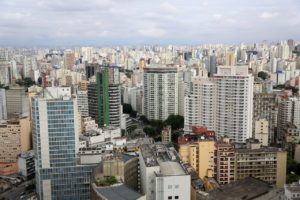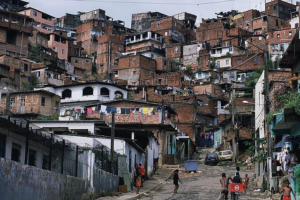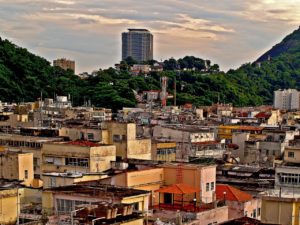by Gerald L. DeSalvo
Each year tens of thousands of American and other foreign business travelers visit Brazil for their organizations. Violent crime in Brazil continues to increase at an alarming rate, creating serious concerns for these travelers and their organizations. Recent studies reveal that 33 Brazilian cities fall within the top 50 cities worldwide in homicide rates alone.
This report will provide a brief discussion of the risk from crime to business travelers visiting Brazil. It will also provide links to security related information resources, and review 10 common sense security precautions that the travelers should be following to minimize their risk while in the country.
Where is violent crime the most serious threat in Brazil?
Determining where the most serious threats to business travelers are in Brazil is a difficult task for a variety of reasons. Brazil is one of the world’s largest countries and encompasses an area larger than the continental United States. Brazil’s population is mostly concentrated in several large, densely populated metropolitan areas, numerous cities of 250,000 or more inhabitants, and many smaller rural cities and towns spread throughout the country. Within each of these different types of communities the number of violent criminal incidents often varies from neighborhood to neighborhood. Violent crime knows no boundaries and affects all locations and strata of society, albeit at different rates. As such, public security, or the lack thereof, is a major concern for Brazilians and visitors alike.
The public security forces, prosecutor’s offices, courts, corrections and other criminal justice entities, both federal and state, throughout Brazil are inadequately funded. Most are poorly equipped, staffed, organized, trained, coordinated and have corruption problems. Because of these issues they struggle to provide adequate service and protection in many areas of the country. These limitations within the criminal justice system, combined with very high levels of poverty, unemployment, firearms availability and drug usage, all contribute to the high rate of violent crime. In addition, criminal gangs and drug trafficking organizations have taken advantage of the weaknesses in the criminal justice system and poor social conditions, to expand their illegal activities and influence in in the country.
Due to the issues above, there is widespread under-reporting of criminal incidents, as large segments of the population, especially those within lower socioeconomic groups, lack confidence in the criminal justice system’s ability to effectively respond to their public security needs. Many seriously question the criminal justice system’s ability to effectively investigate, identify, arrest and prosecute criminals, and their ability to protect them from criminal reprisal if they do report incidents. Maintaining accurate criminal statistics in such a complex and dynamic environment is very challenging at best.
So, how do we determine where the threat from crime is the highest in Brazil?
One method to collect data on violent crime used by researchers, in such complex situations, is to study homicide rates. While most other crimes are underreported, a dead body attracts attention and involves both the police and a medical examiner in the determination of the surrounding circumstances and cause of a death. This information is normally recorded for statistical purposes in a government database. (Note: this does not always happen, however, as some states in Brazil have failed to report their homicide statistics on the expected schedule, and/or are suspected of inaccurate reporting, thereby, tainting the overall country statistics and state by state comparisons. This situation is further complicated by the fact that many organized crime groups purposely dump the bodies of homicide victims in other areas of the city in order to deflect attention from their activities, as well as protect corrupt officials in their areas of operations).
These databases, therefore, offer one of the only quantifiable crime statistics of relative validity for comparative studies. As such, they are frequently used to study violent crime across different countries, and different regions within countries. Although the homicide rates do not directly correspond to the rates for other violent crimes such as armed robbery, aggravated assault, sexual assaults, etc., they are a likely indicator of high levels of other types of violent crime.
In 2018, two studies of homicide rates were conducted by reputable research organizations of worldwide homicide rates (excluding war and conflict zones such as Iraq, Afghanistan, Syria). The studies reported some alarming results for Latin America and especially Brazil. This article will focus on the Brazil specific results contained in the research reports.
Igarape Institute – Worldwide Homicide Research Study
According to a 2018 report by the Igarape Institute in Brazil, the following cities in Brazil are listed in the list of Top 50 cities by homicide rates (2017 or latest year available by homicides/100k residents. Note: cities over 250,000 inhabitants).
CITIES: Marabá (7), Grande Sao Luís (8), Ananindeua (10), Serra (12), Caruaru (13), Viamão (14), Belém (16), Mossoró (18), Aparecida de Goainia (20), Caucaia (21), Aracaju (22), Imperatriz (24), Manaus (25), Camacari (28), Maceió (30), Betim (31), Cariacica (32), Natal (33), Vitória da Conquista (36), Juazeiro do Norte (37), Porto Alegre (42), Canoas (43), Cuiabá (46), Joao Pessoa (47), Jaboatão dos Guararapes (50).
Seguridad, Justicia y Paz – Worldwide Homicide Research Study
According to a 2018 report by Mexican civic group and think tank publication, Seguridad, Justicia y Paz by the Consejo Ciudadano para la Seguridad Publica y Justicia Penal A.C., the following cities in Brazil are on the list of Top 50 cities in the world by homicide rates (2017 or latest year available by homicides/100k residents. Note: cities over 300,000 inhabitants).
CITIES: Natal (4), Fortaleza (7), Belem (10), Vitoria da Conquista (11), Maceio (14), Aracaju (18), Feira de Santana (19), Recife (22), Salvador (25), Joao Pessoa (30), Manaus (34), Porto Alegre (39), Macapa (40), Campos dos Goytacazes (45), Campina Grande (47), Teresina (48), Vitoria (49).
COMMENTS: As one can see, many of the cities listed are on both rankings, although their ranking on the lists varies. The Igarape Institute list includes 25 Brazilian cities on the Top 50 list while the Seguridad, Justicia y Paz list contains 17 cities on its list.
Consolidated List of the 33 Brazilian Cities on the Top 50 Cities Worldwide List for Homicides
A consolidated list (shown below, without rankings, merges the two lists without duplication) reflects a total of 33 Brazilian cities within the Top 50 most violent cities in the world by homicide rate, a statistic that illustrates the serious crime problem confronting Brazil.
CONSOLIDATED CITIES LIST: Marabá, Grande Sao Luís, Ananindeua , Serra, Caruaru, Viamão, Belém, Mossoró, Aparecida de Goainia, Caucaia, Aracaju, Imperatriz, Manaus, Camacari, Maceió, Betim, Cariacica, Natal, Vitória da Conquista, Juazeiro do Norte, Porto Alegre, Canoas, Cuiabá, Joao Pessoa, Jaboatão dos Guararapes, Fortaleza, Feira de Santana, Recife, Salvador, Macapa, Campos dos Goytacazes, Campina Grande, Teresina.
In addition to the two studies above, InSight Crime in a 2018 article, also provides a breakdown on homicide rates in the various states in Brazil. The article clearly illustrates the complexity of the violent crime situation in the country and the difficulty of developing effective solutions to it.
COMMENTS: Many of the cities on the Consolidated List are located in the impoverished and rapidly developing North and Northeast regions of the country and located in areas that exhibit living conditions similar to what existed in the “Wild West” of the United States in the 19th Century.
What about the security threats in the large metropolitan cities of Brazil?
The U.S. Embassy maintains diplomatic facilities in several major cities in Brazil (which have consular regions encompassing the other areas/cities of the country). Among the responsibilities of these facilities is the reporting on the crime threat in their areas, so that U.S. citizens traveling or living in their areas are aware of potential threats and can take appropriate precautions.
The U.S. diplomatic facilities in Brazil are as follows: (1) U.S. Embassy in Brasilia, (2) U.S. Consulate General, Sao Paulo; (3) U.S. Consulate General in Rio de Janeiro, (4) U.S. Consulate General in Recife. Each of these diplomatic facilities produces an Annual Crime and Safety Report on their host region that is posted online for the public by the U.S. State Department’s Overseas Security Advisory Council (OSAC). Among other things, these OSAC Crime and Safety Reports classify each area as either low, medium, high or critical (the highest threat level) for crime.
The 2018 OSAC public crime threat levels for the diplomatic regions in Brazil are:
- U.S. Embassy, Brasilia – Critical Crime Threat
- U.S. Consulate General, Sao Paulo – Critical Crime Threat
- U.S. Consulate General, Rio de Janeiro – Critical Crime Threat
- U.S. Consulate General, Recife – Critical Crime Threat
The typical violent crimes reported in Brazil at significant levels are: (a) homicides, (b) street muggings, (c) armed robberies, (d) street assaults, (e) thefts, (f) burglaries – of autos, residences, businesses, (g) drugging, robbery and sometimes sexual assault of clients of adult entertainment establishments such as: strip clubs, bordellos, night clubs, (h) robberies of passengers by unlicensed taxi drivers, (i) extortion, and (j) express kidnappings. (Note: among other factors these rates correspond to the location of the crime, time of day of the crime, and the victim’s activity at the time of the crime).
10 Common Sense Security Precautions for Business Travelers to Brazil
Travel to Brazil for most business travelers is enjoyable, productive and uneventful (from a security standpoint), but the risks from violent crime are real, omnipresent, and dangerous. These risks can be greatly reduced, however, by following good security awareness. The list of 10 Common Sense Security Precautions for Business Travelers to Brazil, provided below, includes precautions that are simple but effective, and should help you to enhance your personal security and ensure that your trip to the country is safe and productive.
- Register with the U.S. State Department’s, Smart Traveler Enrollment Program (STEP) before you leave for Brazil. Program registration is available online. Check the public OSAC Crime and Safety Reports and the State Department Travel Advisories for Brazil. If you have an organization sponsored Travel Safety program, follow its travel guidance and procedures.
- Check for currently available online crime information on Brazil, such as this excellent InSight Crime overview of Brazil, before you depart. Use the list of Brazilian cities with high homicide rates contained in this article as an indicator of an increased threat and be especially alert to your surroundings when in these cities.
- Maintain good situational awareness at all times when in Brazil and especially when on the street. Look for suspicious persons and vehicles when you are out. Avoid them and put distance between yourself and them as quickly as possible. Get to a nearby safe haven such as a police or fire station, hospital, open government building, or busy business location and call for help, if necessary.
- Keep a low profile and avoid ostentatious displays of wealth at all times. Do not bring or wear expensive jewelry, watches, or display large sums of cash when in Brazil. Be discreet. Try not to attract attention to yourself.
- Do not leave valuables such as cell phones, purses, cameras, and laptops, unattended in hotel lobbies, restaurants, vehicles, nightclubs, or at the beach.
- When you arrive in Brazil ask your local coworkers and/or hotel concierge what high crime areas to avoid in the cities/areas where you are visiting. Avoid marginal communities (favelas) where violent crime is high, rural areas where there is little police presence, areas of a city where street prostitution and drug sales are highly visible, and public transportation hubs, whenever possible.
- Avoid adult entertainment establishments such as strip clubs, massage parlors, and bordellos. These are typically run by organized crime members and patrons are routinely overcharged, robbed, drugged and assaulted in these locations.
- Avoid dark, poorly lit, desolate and isolated areas at night. Once again, ask local coworkers about areas of the city/country you should avoid or be especially cautious.
- Avoid using public buses and “gypsy” or unmarked taxis. Only use radio taxi’s, Uber services, or registered hotel vehicles, if possible.
- If/when driving vehicles in Brazil, lock all doors and keep all windows closed to avoid being victimized by petty street criminals, who often congregate at busy intersections, especially during “rush hour”. (Note: Young street urchins (Pivete’s) are common in most urban areas, and often offer to “guard” your car when parking it, especially in areas close to bars, restaurants, etc. They charge a small fee for their “services”, but you should be aware that the “Pivetes” are often “spotters” for adult criminals, so visitors are strongly advised not to leave valuables visible in vehicles at any time).
Conclusion
This article examined the crime situation in Brazil and the difficulty of finding accurate and timely crime information for the country. It reviewed the results of two comparative studies of worldwide homicide rates (that excluded war and conflict zone countries). The examination revealed that 33 Brazilian cities were listed in the top 50 list of worldwide homicide rates. The article also listed a number of webpages (with links) where valuable security information regarding Brazil could be obtained from the U.S. Department of State.
Lastly, the article discussed 10 common sense security precautions that travelers should follow when in Brazil and that should greatly reduce their chances of being victimized while in the country.
Author: Gerald L. DeSalvo is the Managing Director of WGSG. He has more than 40 years of international security management, law enforcement and military intelligence experience. He has lived and worked overseas for 15 years, including 10+ years in Latin America.
Copyright (c) 2018. All rights reserved.
Disclaimer: The Wellington Global Security Group is not responsible for any errors or omissions, or for the results obtained from the use of information contained in this website. All information in this site is provided “as is”, with no guarantee of completeness, accuracy, timeliness or of the results obtained from the use of this information. Any action you take based on the contents of this website is strictly “at your own risk”.

